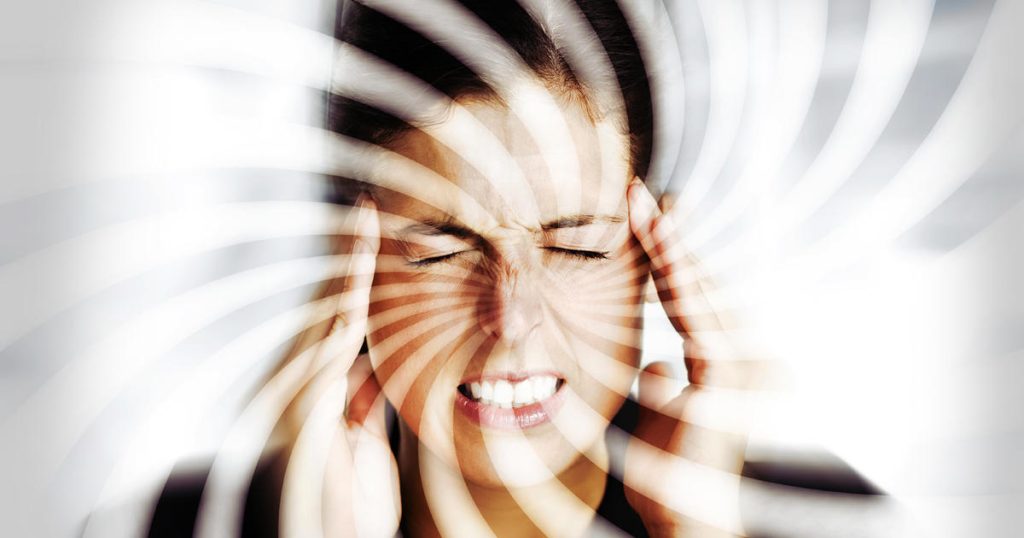Vertigo
Vertigo is dizziness that creates the false sense that you or your surroundings are spinning or moving.
The condition can feel similar to motion sickness, but it’s not the same as lightheadedness.
Dizziness is a term used to describe a range of sensations, such as feeling faint, woozy, weak or unsteady. Dizziness that creates the false sense that you or your surroundings are spinning or moving is called vertigo.
Dizziness is one of the more common reasons adults visit their doctors. Frequent dizzy spells or constant dizziness can significantly affect your life. But dizziness rarely signals a life-threatening condition.
Causes
Common causes for vertigo include benign paroxysmal positional vertigo, infection, Meniere’s disease, and migraine.
- Benign paroxysmal positional vertigo (BPPV). This is the most common cause of vertigo and creates an intense, brief sense that you’re spinning or moving. These episodes are triggered by a rapid change in head movement, such as a blow to the head.
- Infection. A viral infection of the vestibular nerve, called vestibular neuritis, can cause intense, constant vertigo.
- Meniere’s disease. When excessive fluid builds up in the inner ear, the result can be sudden episodes of vertigo that last for several hours.
- Migraine. Migraine-induced vertigo can last minutes to hours.
Benign positional vertigo
Although benign paroxysmal positional vertigo can be bothersome, it’s rarely serious except when it increases the chance of falling.
Symptoms may include:
- dizziness
- a sense that you or your surroundings are spinning or moving
- a loss of balance or unsteadiness
- nausea
BPPV. These initials stand for benign paroxysmal positional vertigo. BPPV occurs when tiny calcium particles (canaliths) are dislodged from their normal location and collect in the inner ear. The inner ear sends signals to the brain about head and body movements relative to gravity. It helps you keep your balance.
BPPV can occur for no known reason and may be associated with age.
Meniere’s disease. This is an inner ear disorder thought to be caused by a buildup of fluid and changing pressure in the ear. It can cause episodes of vertigo along with ringing in the ears (tinnitus) and hearing loss.
Vestibular neuritis or labyrinthitis. This is an inner ear problem usually related to infection (usually viral). The infection causes inflammation in the inner ear around nerves that are important for helping the body sense balance
Less often vertigo may be associated with:
- Head or neck injury
- Brain problems such as stroke or tumor
- Certain medications that cause ear damage
- Migraine headaches
Symptoms of Vertigo
Vertigo is often triggered by a change in the position of your head.
People with vertigo typically describe it as feeling like they are:
- Spinning
- Tilting
- Swaying
- Unbalanced
- Pulled to one direction
Other symptoms that may accompany vertigo include:
- Feeling nauseated
- Vomiting
- Abnormal or jerking eye movements (nystagmus)
- Headache
- Sweating
- Ringing in the ears or hearing loss
Treatment for Vertigo
Treatment for vertigo depends on what’s causing it. In many cases, vertigo goes away without any treatment. This is because your brain is able to adapt, at least in part, to the inner ear changes, relying on other mechanisms to maintain balance.
For some, treatment is needed and may include:
Vestibular rehabilitation. This is a type of physical therapy aimed at helping strengthen the vestibular system. The function of the vestibular system is to send signals to the brain about head and body movements relative to gravity.

